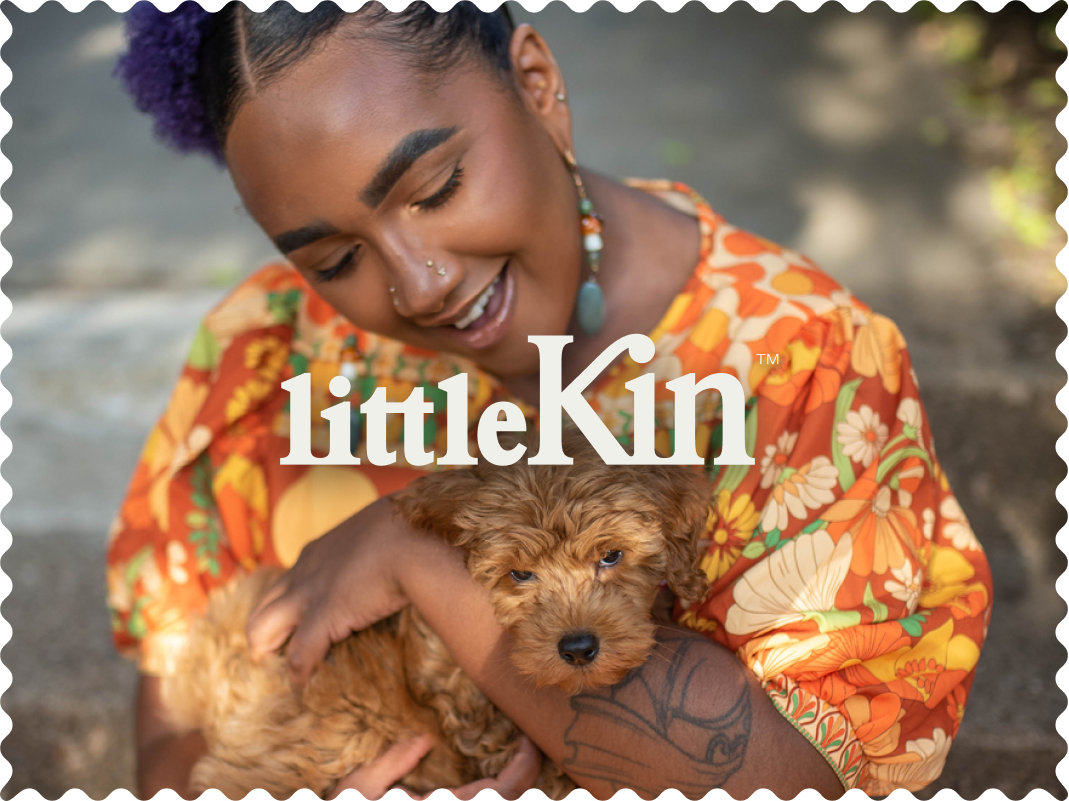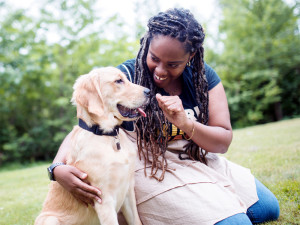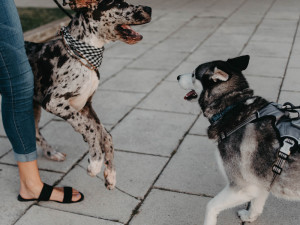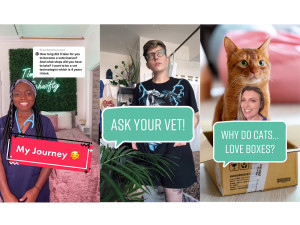Neutrality Walks: The Overhyped Trend Dogs Don’t Need
Your dog’s joy > social media trends
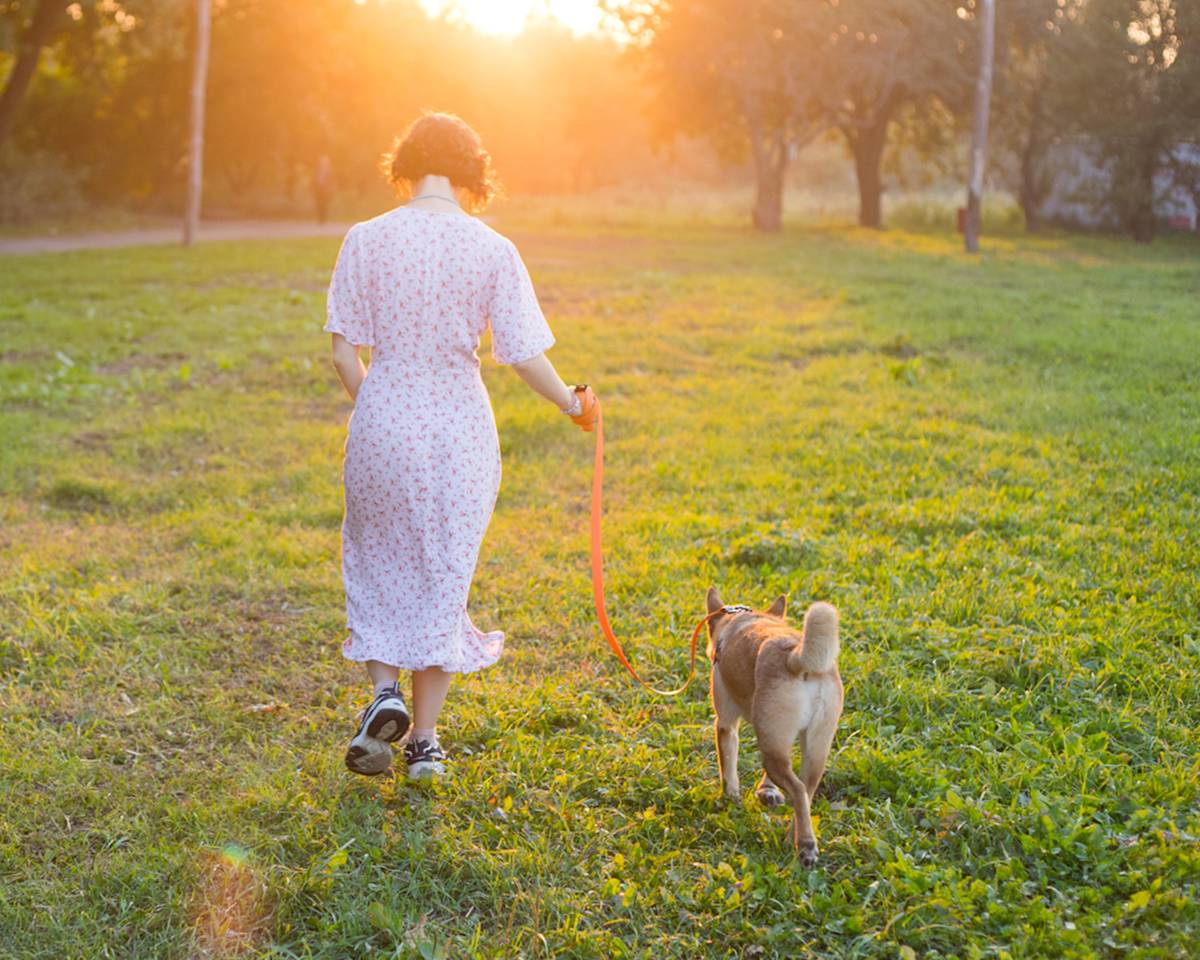
Share Article
If you spend any time on dog Instagram or TikTok, you’ll probably have seen a similar sight. A video of a group of dogs being walked near each other, remaining focused on their guardian at all times – not reacting to anything they see, smell or hear. Almost like a bunch of robots, or a military drill.
What am I talking about? The ‘neutrality’ walk.
It’s part of a training approach popularised on social media where dogs are expected to ignore absolutely everything in their environment – other dogs, people, smells, squirrels, kids on scooters – and stay solely focused on their guardian. The goal? Total neutrality. No interaction, no exploration, no curiosity.
It sounds dreamy at a first glance – who wouldn’t want their dog to be able to ignore distractions and float peacefully through the world? Wouldn’t that make for much nicer walks?
But I am not a fan. And I’ll tell you why.
The wonder of dogs
When I knew very little about dogs (except that I loved them), I didn’t want one as an accessory. A plaything that did what I wanted, when I wanted, and received little in return. I longed for a new member of the family that I could love and cherish. To support and look after no matter what happened. And to have some fun along the way, of course.
So, when I became a dog behaviourist and realised just how little I knew about dogs, my eyes opened up even more to how much they felt and experienced. Like the fact that they have around 300 million olfactory receptors in their noses compared to our measly six million, and how their amazing scent detection skills mean they can almost travel back in time to ‘see’ what has happened in a particular place. Or that playing isn’t just a way to have mindless fun but a way to build cooperative relationshipsopens in new tab with others.
Why would I want to deny my dog those opportunities in the outside world when I already expect him to stay indoors most of the day and stick to a routine that he had no say in? Why should he be expected to behave in a way that I wouldn’t expect myself or other people to behave? Do I walk down the street and ignore everything I see, hear or smell? Absolutely not. I’ll jump if a loud noise suddenly occurs or turn to look at something that’s caught my eye. It’s called being alive!
Reactive dogs deserve better
Having the freedom to make choices and safely learn about the world builds confidence and resilience: two things that actually result in an ‘emotionally stable’ dog that’s less likely to react adversely to things. A dog that’s unable to do those things is likely to become more withdrawn or a ticking time bomb just waiting to explode. Neither of which are healthy.
And that’s where the big problem lies when it comes to neutrality walks: when they’re being used to ’rehabilitate’ reactive dogs.
Obedience does not change how a dog feels so any change to their behaviour is superficial. Yes, your dog may be able to do a lovely sit or heel while another dog walks past. But it’s unlikely they feel any less worried by that dog. In fact, they may feel completely overwhelmed in a group of dogs that are being made to walk very close together with no ability to move away or perform natural behaviours like sniffing. Working at a distance they can cope with, giving them some choice in their response, and gradually progressing to more challenging situations is the key for those dogs.
And if your dog’s more frustrated rather than fearful, not giving them any opportunities to be a dog and learn how to interact isn’t going to reduce that frustration. It’s going to intensify it. Of course, teaching them an alternative response can be helpful for times they can’t go and say hello or play. But we’re missing a big part of the puzzle if that’s all we focus on.
Rethinking neutrality
If you’re looking for an activity where your dog can be exposed to things they have big feelings about in the right way, there are some great alternatives to neutrality walks.
You may be able to find a trainer or behaviourist who holds carefully planned social walks for dogs that involve a small group who will have been assessed beforehand mooching around in a wide, open space with plenty to sniff. There may be no close-ups at all (or at least not initially). And each dog’s needs will be taken into account as they’ll all be different.
Or if you want something more structured, you could go to a class where dogs have plenty of space from each other where needed and are taught to respond to cues, do fun activities and learn to relax around a variety of distractions.
Anything where your dog gets to be a dog and enjoy their time in their environment and around others with no pressure will help. Even just you going on a solo sniffari with them once a week can do wonders for dogs who are struggling behaviourally.
If you do opt for something marketed as a neutrality walk, pay attention to your dog’s body language and the body language of the other dogs. Do they look loose and wiggly and like they’re having a good time? Or are they rigid, tense and robot-like? Do they feel safe enough to perform natural behaviours? Or are they being pressured to do things that might make them feel uncomfortable?
Ditching trends
TikTok trends come and go. But the one constant we have is the joy our dogs bring to our lives. I feel it’s our jobs to give that joy back to them and more. Plus, as people, we need to remember that we are the ones with the bigger, more complex brains. And if we would find something hard to do, it’s hardly fair to ask that of our dogs.
So what to do with neutrality? Let’s chuck it in the bin and find a better way to help our dogs thrive, rather than just survive.

Lauren Sharkey
Lauren Sharkey is a journalist-turned-dog behaviourist who runs Winnie’s Worldopens in new tab: a training and behavioural company that aims to give dogs and their pet parents the life they deserve. She shares her life with a Shar Pei named Winston, who is the inspiration for her career change along with being her biggest love (and challenge!).
Related articles
![kneeling woman with braids training her golden retriever]()
How to Find the Right Trainer, No Matter What Your Dog’s Been Through
With so many dog trainers out there that it can be hard to know who you can actually trust (especially if your dog has trust issues of their own), here’s where to start…
![Great Dane puppy and Husky meeting on leash out side.]()
Understanding Reactivity and Aggression in Dogs: Two Very Different Things
Apparently even experts have a hard time defining these terms
![a close up picture of a dog's face with sad eyes]()
The TikTok Trend Your Dog Wishes You’d Avoid
Your dog’s health > likes
Viral TikTok Trends Are Cute, But Does Your Pet Enjoy Them?
The real impact of social media trends on your pets’ well-being
![3 Screenshots side by side of cover photos for three different Veterinarians who post videos on Tik Tok.]()
11 Vets You Should Follow on TikTok
TikTok has a ton of veterinarians giving helpful (and entertaining) advice
